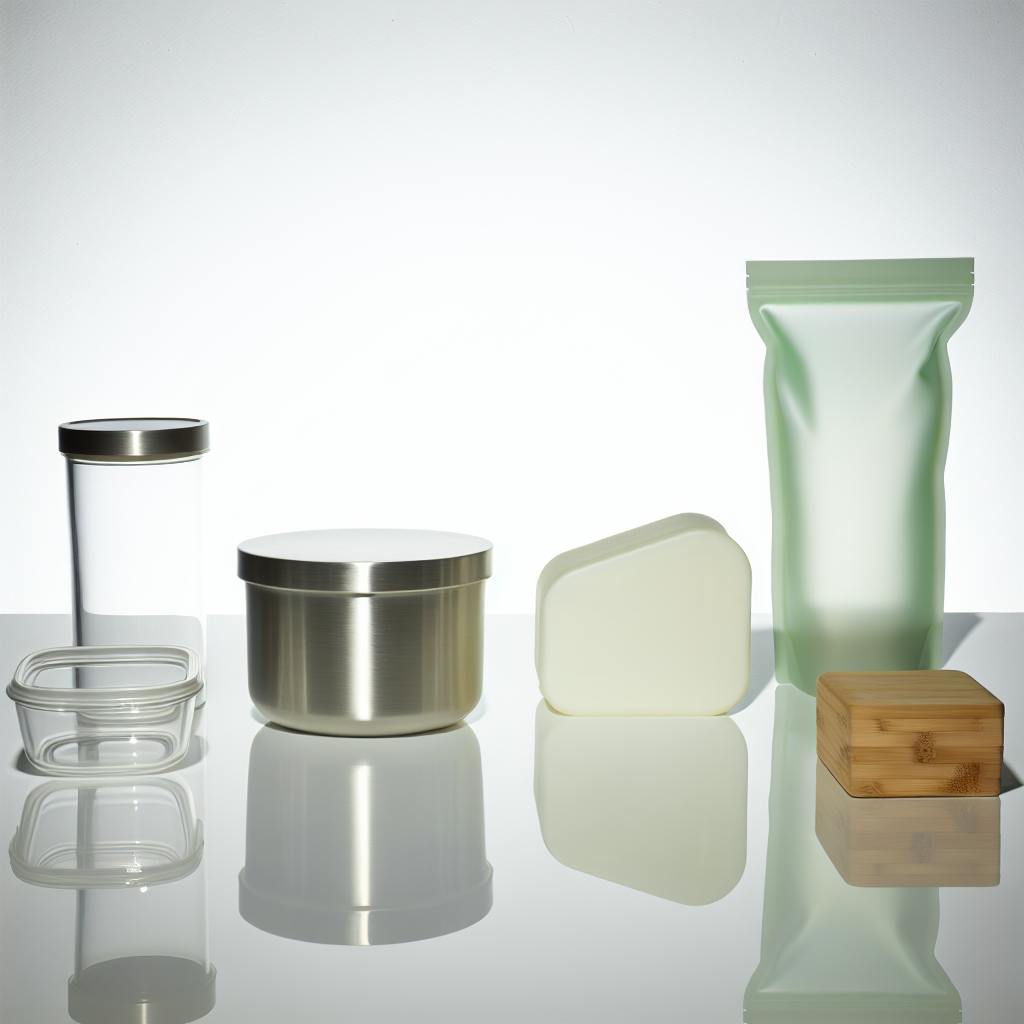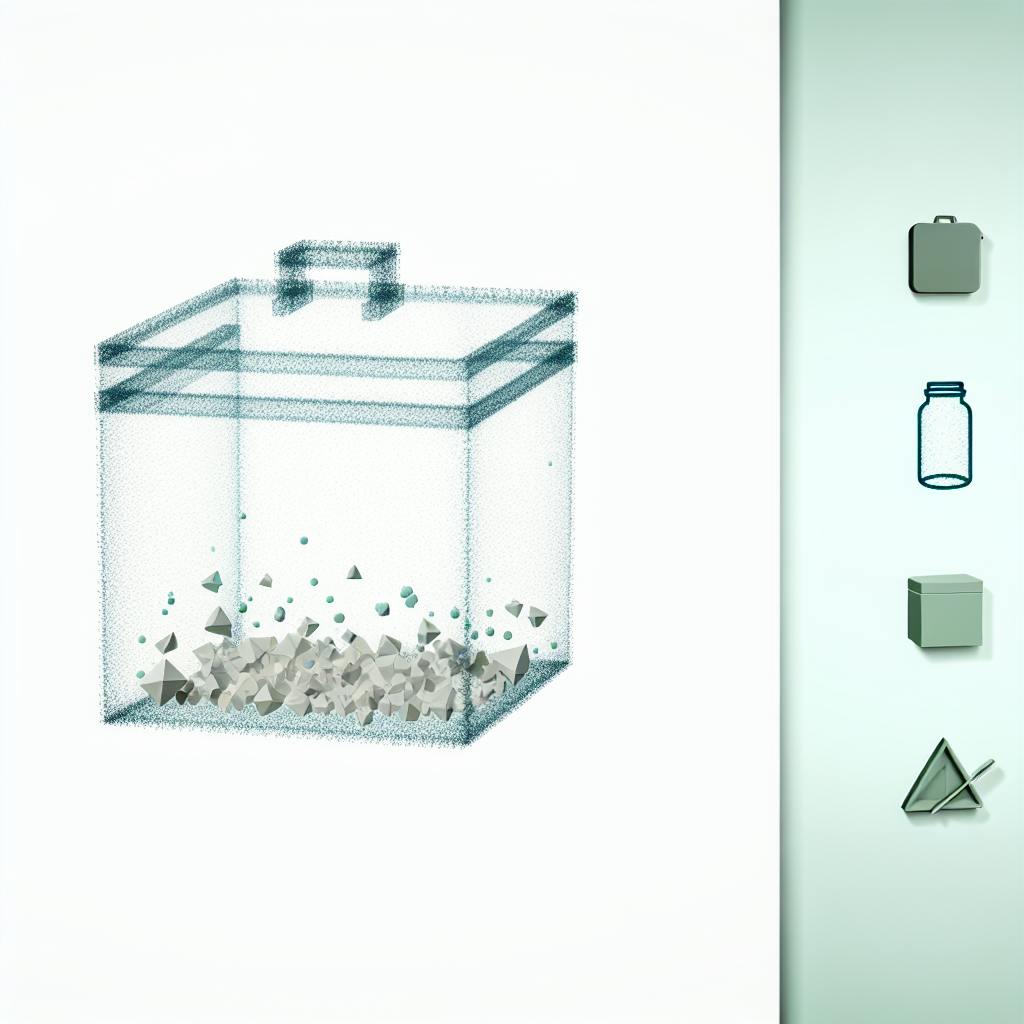Microplastics are tiny plastic particles smaller than 0.2 inches that can enter our bodies through ingestion or inhalation. They come from two main sources:
- Primary microplastics: Manufactured as small particles (e.g., microbeads, plastic pellets)
- Secondary microplastics: Formed from the breakdown of larger plastic items due to environmental factors
| Potential Health Risks |
|---|
| Hormone disruption and reproductive issues |
| Increased risk of chronic diseases and cancer |
| Inflammation and immune system impairment |
| Organ damage (lungs, liver, etc.) |
| Gut microbiome disruption |
One significant source of microplastic exposure is through food and beverages, particularly from plastic food storage containers like Tupperware. Studies have found that microwaving or heating food in plastic containers can release millions of microplastic particles into the food, with the leaching increasing as the containers age or get damaged.
To reduce microplastic exposure:
Related video from YouTube
Choosing Safe Containers
| Material | Pros | Cons |
|---|---|---|
| Glass | Does not leach chemicals, easy to clean | Can break if dropped, heavier |
| Ceramic | Does not leach, microwave-safe, various styles | Can chip or crack over time |
| Stainless Steel | Durable, does not leach, dishwasher-safe | More expensive, can discolor |
Using Plastic Containers Safely
- Avoid heating plastic: Never microwave food in plastic containers or put them in the dishwasher. Heat accelerates chemical leaching.
- Replace damaged containers: Discard any plastic containers that are scratched, cracked, or cloudy, as these are more prone to leaching chemicals.
- Hand-wash plastic: Wash plastic containers by hand with mild soap and water instead of the dishwasher to prevent further breakdown.
Lifestyle Changes
- Buy in bulk: Purchase grains, nuts, seeds, and other dry goods from bulk bins using reusable bags or containers.
- Choose fresh produce: Opt for fresh, unpackaged fruits and vegetables over pre-packaged options to avoid plastic packaging.
- Use reusable alternatives: Replace plastic wrap with beeswax wraps or silicone covers, and carry a reusable water bottle and travel mug.
- Avoid single-use plastics: Say no to disposable plastic bags, bottles, utensils, and straws whenever possible.
By making smart choices and adopting sustainable practices, we can significantly reduce our exposure to microplastics and protect our health and the environment.
Plastic Containers and Microplastics
Plastic food containers, like Tupperware, may release tiny plastic particles called microplastics into your food and drinks. Several studies have found microplastics in new and used plastic containers.
A 2023 study showed that microwaving water or dairy products in polypropylene and polyethylene containers can release millions of microplastic and nanoplastic particles into the food. The researchers estimated that a single square centimeter of plastic area could release up to:
| Microplastic Release | Polypropylene Containers | Polyethylene Pouches |
|---|---|---|
| Microwave Heating (3 min) | 4.22 million particles/cm² | - |
| Refrigeration (6 months) | Millions of particles | Billions of particles |
| Room Temperature (6 months) | Millions of particles | Billions of particles |
Another study analyzed microplastics from plastic takeaway food containers in seven Chinese cities. The researchers found microplastics in all containers, ranging from 3 to 43 particles per container. Most particles were fibers (66-87%).
Factors that can increase microplastic release from plastic containers include:
- Heat exposure: Microwaving or heating the containers
- Age and wear: Older, scratched, or damaged containers
- Chemical composition: Different plastic types (e.g., polypropylene, polyethylene)
While the full health impacts of microplastic exposure are still being studied, some research on cell cultures and animal models has raised concerns about potential toxicity, inflammation, and disruption of biological processes. As plastic containers are a common source of microplastic contamination in our food and beverages, it is crucial to understand and address this issue.
Kitchen Items with Microplastics
Many kitchen items made of plastic can release tiny plastic particles called microplastics into your food. Here's a comparison:
Plastic Wraps and Bags
| Item | Microplastic Release |
|---|---|
| Plastic Wraps and Bags | Microplastics can transfer to food when using plastic wraps and bags for storage, especially with fatty or oily foods, acidic foods, and when heated. |
Plastic Cutting Boards and Utensils
| Item | Microplastic Release |
|---|---|
| Plastic Cutting Boards and Utensils | Cutting on plastic boards and using plastic utensils can generate microplastic particles that get into your food. One study found millions of microplastics released annually from plastic cutting boards. |
Plastic Food Storage Containers
| Item | Microplastic Release |
|---|---|
| Plastic Food Storage Containers | Microplastics can leach from plastic containers, particularly when reheating or microwaving food in them. The leaching increases with age, wear, and heat exposure. |
Plastic Bottles and Condiment Containers
| Item | Microplastic Release |
|---|---|
| Plastic Bottles and Condiment Containers | Plastic bottles for drinks and condiment containers can also release microplastics, especially when reused or scratched. |
-
Plastic wraps and bags used for food storage can release microplastics into the food they touch. The leaching is higher for fatty or oily foods, acidic foods, and when the plastic is heated, such as in the microwave.
-
Cutting food directly on plastic boards and using plastic utensils can generate microplastic particles that transfer to your food. A study found that plastic cutting boards can release millions of microplastics annually during regular use.
-
Plastic containers used for storing and reheating food, especially in microwaves, can leach microplastics into the food. The leaching increases with age, wear, and heat exposure of the containers. Some studies have found millions of microplastic particles released from a single container during microwaving.
-
Plastic bottles for drinks and plastic containers for condiments like ketchup and mustard can also contribute to microplastic ingestion. The risk is higher when the bottles or containers are reused, scratched, or heated.
sbb-itb-1dc3f59
Health Risks of Microplastics
Microplastics pose a growing threat to human health and the environment. As these tiny plastic particles accumulate in the food chain, we ingest and inhale them through contaminated food, water, and air.
One major concern is the potential for microplastics to disrupt hormones and increase the risk of chronic diseases:
- Many plastic additives, like bisphenols and phthalates, can mimic hormones like estrogen.
- This could lead to reproductive issues, developmental problems, and even cancer.
Microplastics have also been linked to:
- Inflammation
- Gut microbiome disruption
- Organ damage
Studies in animals show that microplastic exposure can negatively impact:
- Lungs
- Liver
- Male reproductive system
While research on human health effects is still in its early stages, the evidence so far raises concerns about the long-term impact of microplastic accumulation in the body.
| Potential Health Risks |
|---|
| Hormone disruption and reproductive issues |
| Increased risk of chronic diseases and cancer |
| Inflammation and immune system impairment |
| Organ damage (lungs, liver, etc.) |
| Gut microbiome disruption |
Furthermore, microplastics can act as carriers for other pollutants and pathogens, potentially amplifying their toxic effects. The long-term consequences are still largely unknown, and more research is urgently needed.
Given the growing evidence of harm and the widespread presence of microplastics in our environment, many experts advocate for reducing exposure and mitigating potential health hazards.
Reducing Microplastic Exposure
Choosing Safe Containers
Use glass, ceramic, or stainless steel containers to store food instead of plastic. These materials do not release harmful chemicals. Avoid plastics marked with recycling codes 3, 6, and 7, as they may contain concerning additives.
| Material | Pros | Cons |
|---|---|---|
| Glass | Does not leach chemicals, easy to clean | Can break if dropped, heavier |
| Ceramic | Does not leach, microwave-safe, various styles | Can chip or crack over time |
| Stainless Steel | Durable, does not leach, dishwasher-safe | More expensive, can discolor |
Using Plastic Containers Safely
If you must use plastic containers, never microwave food in them. The heat can cause chemicals to leach into your food. Replace old, scratched, or cracked containers, as the damage increases leaching risk. Hand-wash plastic containers instead of using the dishwasher to prevent further breakdown.
-
Avoid heating plastic: Never microwave food in plastic containers or put them in the dishwasher. Heat accelerates chemical leaching.
-
Replace damaged containers: Discard any plastic containers that are scratched, cracked, or cloudy, as these are more prone to leaching chemicals.
-
Hand-wash plastic: Wash plastic containers by hand with mild soap and water instead of the dishwasher to prevent further breakdown.
Lifestyle Changes
Reduce your reliance on single-use plastics and packaged foods to minimize microplastic exposure. Opt for fresh, unpackaged produce and bulk bin items using reusable bags. Replace plastic wrap with beeswax wraps or silicone covers. Use a reusable water bottle and travel mug instead of disposable plastic bottles and cups.
-
Buy in bulk: Purchase grains, nuts, seeds, and other dry goods from bulk bins using reusable bags or containers.
-
Choose fresh produce: Opt for fresh, unpackaged fruits and vegetables over pre-packaged options to avoid plastic packaging.
-
Use reusable alternatives: Replace plastic wrap with beeswax wraps or silicone covers, and carry a reusable water bottle and travel mug.
-
Avoid single-use plastics: Say no to disposable plastic bags, bottles, utensils, and straws whenever possible.
Conclusion
Microplastics are tiny plastic particles found everywhere - in our food, water, and even the air we breathe. While avoiding them entirely may not be possible, we can take steps to significantly reduce our exposure.
The key is making smart choices and adopting sustainable practices:
- Use safe containers: Store food in glass, ceramic, or stainless steel containers instead of plastic. Avoid plastics marked with recycling codes 3, 6, and 7, as they may contain harmful additives.
| Material | Pros | Cons |
|---|---|---|
| Glass | Does not leach chemicals, easy to clean | Can break if dropped, heavier |
| Ceramic | Does not leach, microwave-safe, various styles | Can chip or crack over time |
| Stainless Steel | Durable, does not leach, dishwasher-safe | More expensive, can discolor |
-
Handle plastic containers with care:
- Never microwave food in plastic containers or put them in the dishwasher. Heat causes chemicals to leach into your food.
- Replace old, scratched, or cracked containers, as damage increases leaching risk.
- Hand-wash plastic containers with mild soap and water instead of the dishwasher.
-
Reduce plastic use:
- Buy grains, nuts, seeds, and other dry goods from bulk bins using reusable bags or containers.
- Choose fresh, unpackaged fruits and vegetables over pre-packaged options.
- Replace plastic wrap with beeswax wraps or silicone covers.
- Carry a reusable water bottle and travel mug.
- Say no to disposable plastic bags, bottles, utensils, and straws whenever possible.
FAQs
How to store food without microplastics?
Glass containers are a safe choice for storing food without microplastics. Glass is non-porous, so it won't absorb odors or flavors, and it's easy to clean. Look for glass containers with airtight lids to keep food fresh. Some great options include:
- Pyrex glass storage containers: Available in various sizes, these durable glass containers are oven, microwave, freezer, and dishwasher safe.
- Mason jars: Affordable and versatile, mason jars can store dry goods, leftovers, sauces, and more. Use airtight lids.
- Glass meal prep containers: Compartmentalized glass containers are perfect for packing lunches and meal prepping.
Stainless steel and silicone are also safe alternatives to plastic. Stainless steel is durable and won't leach chemicals, while silicone is flexible and can be used for storage bags and lids.
| Material | Pros | Cons |
|---|---|---|
| Glass | Doesn't leach chemicals, easy to clean, oven-safe | Can break if dropped, heavier than plastic |
| Stainless Steel | Durable, doesn't leach chemicals, dishwasher-safe | More expensive than plastic, can discolor |
| Silicone | Flexible, microwave-safe, doesn't leach chemicals | Not as rigid as glass or stainless steel |
Avoid plastics labeled with recycling codes 3, 6, and 7, as they may contain harmful additives. With a few simple swaps, you can significantly reduce your exposure to microplastics from food storage containers.


